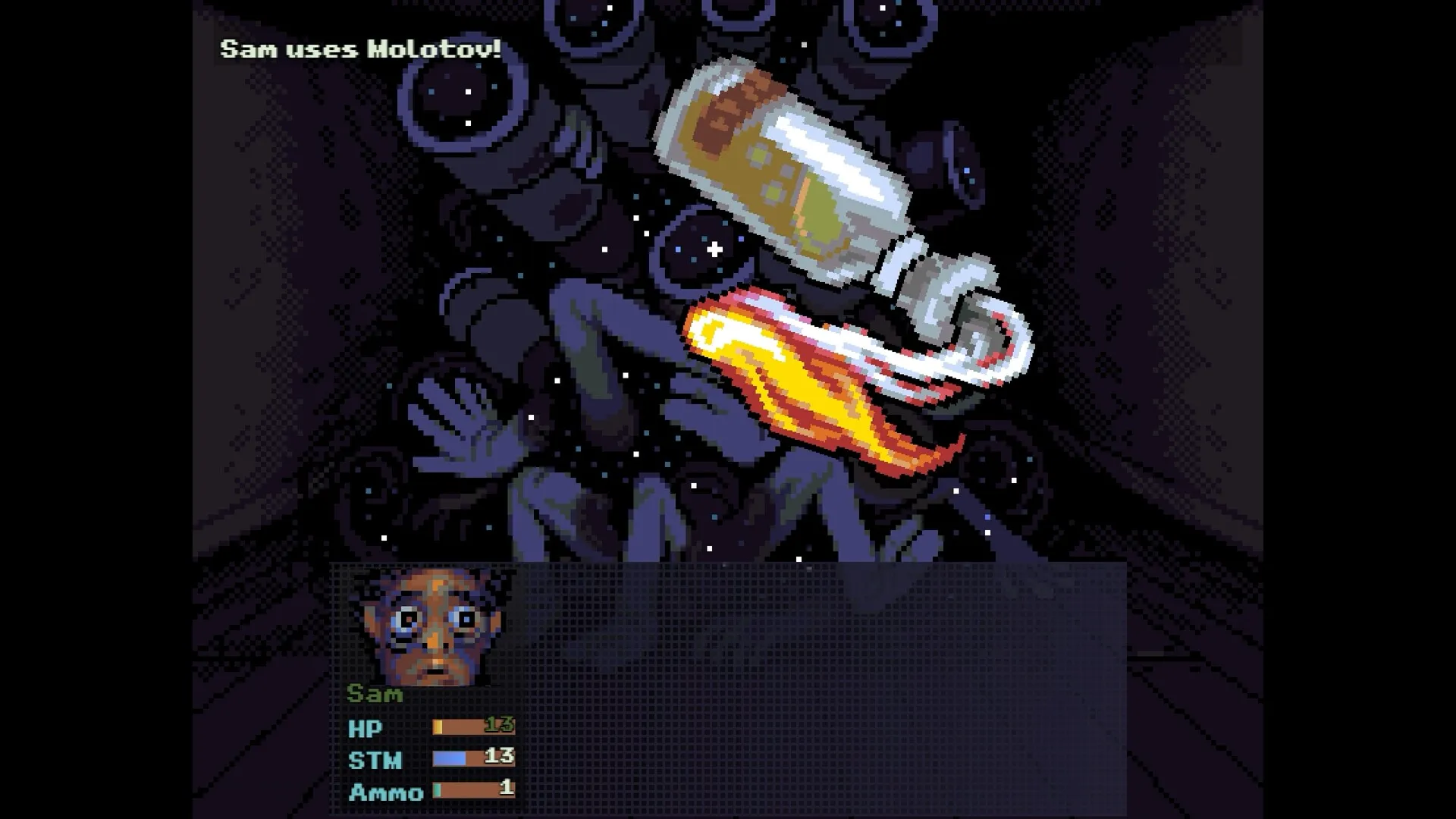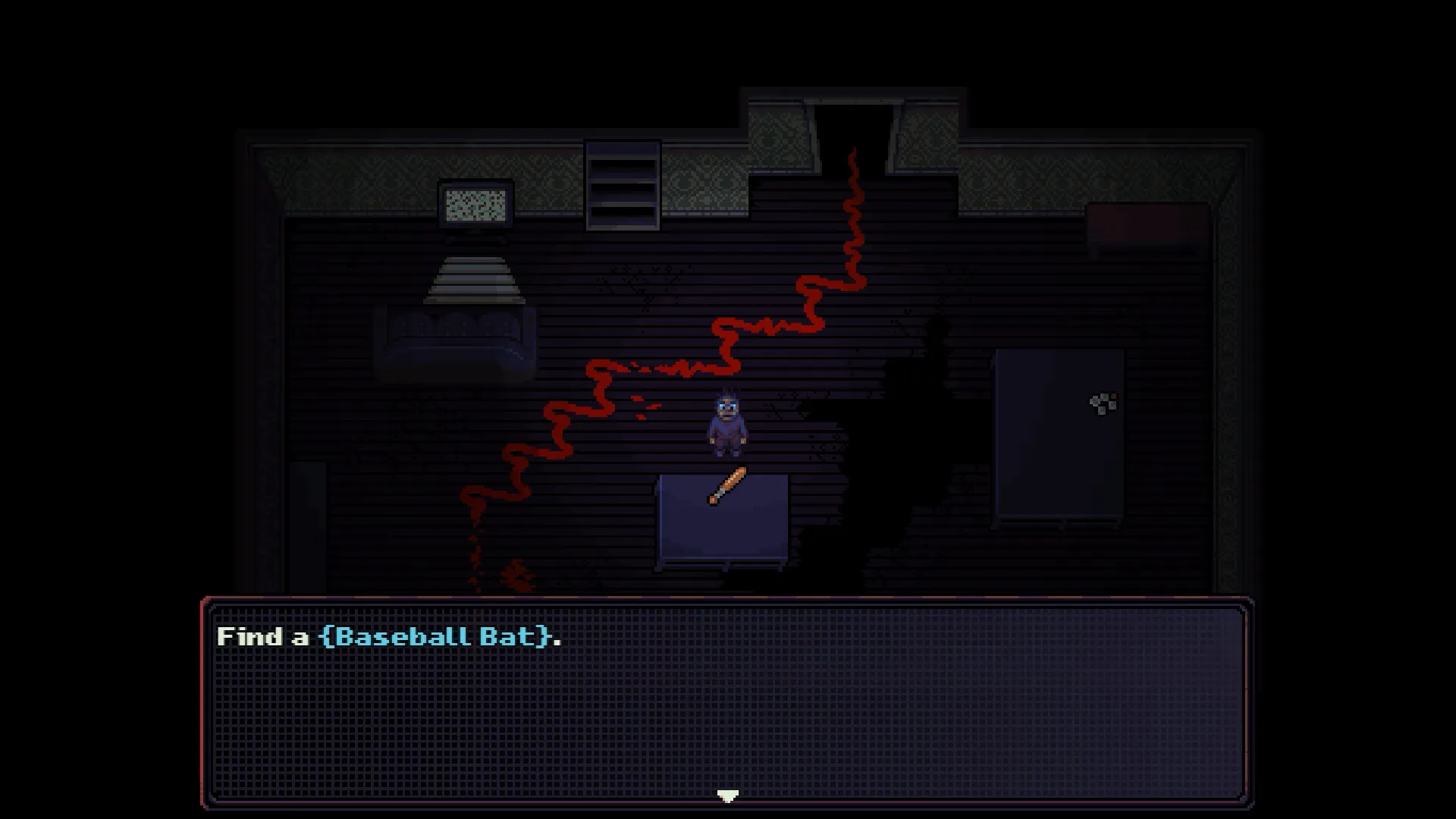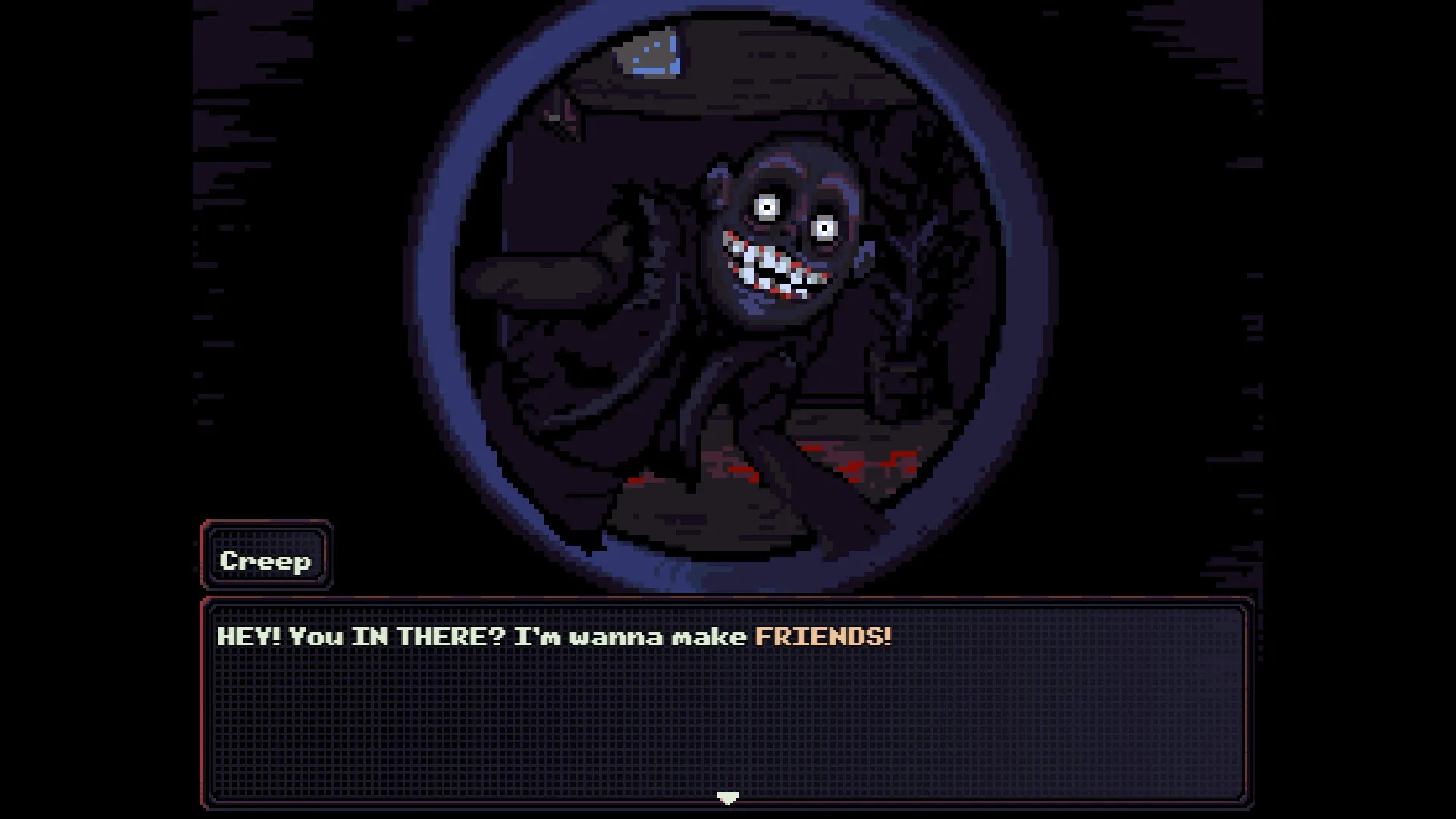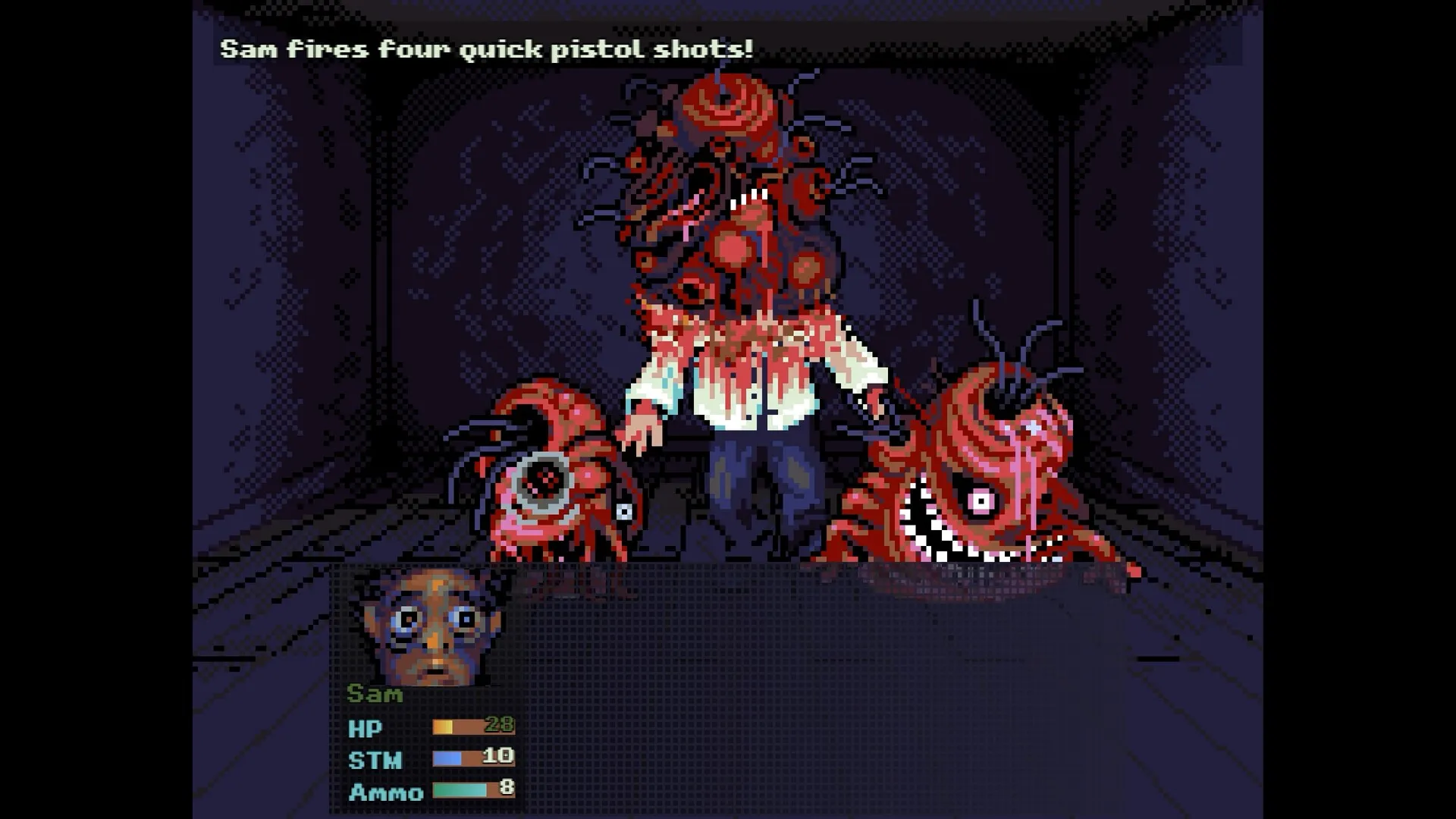“Look Outside” opens with a simple setup: you find yourself confined in a familiar apartment while an unexplainable event alters the world beyond the window. A sudden cosmic occurrence changes the scenery outside, transforming neighbors into eerie figures and everyday streets into unsettling vistas. The game sets a 15-day timer, pressing you to decide whether to remain safe indoors or step out into a reality filled with unnerving surprises.
The visual design employs retro pixel graphics that recall classic titles, yet each frame carries a sense of foreboding. Ambient sounds and careful lighting turn quiet hallways into scenes that seem to breathe tension and evoke shivers.
Every decision feels weighty, as turn-based encounters force you to balance caution with the need to progress. A calculated risk can lead to rewards that alter your character’s fate, making each venture outside feel both necessary and dangerous.
This interplay of narrative and interactive elements creates a feeling that is hard to shake. Each moment you spend gathering supplies or facing an unforeseen threat adds to the emotional impact of the unfolding story, leaving you to wonder about what lies just beyond the next door.
Haunted Halls: Story, Setting, and Emotional Impact
The game opens with a mysterious event that upends everyday life. An unexplained occurrence alters the world outside the window, causing residents to change in disturbing ways and the apartment building to seem touched by something dark.
This incident brings forward a sense of isolation and warns of the steep price paid when one gives in to a strong urge to see what lies beyond familiar walls. The narrative shows that a single decision can lead to lasting changes in both the physical self and the inner spirit, inviting players to weigh their options with care.
The apartment building itself feels like a living stage. Its many floors start as common living spaces but quickly transform into corridors filled with hidden dangers. The contrast between the comfort of a secure room and the rough, shifting hallways adds a careful consideration to every step taken.
Details such as worn wall marks, recurring symbols, and sudden changes in decor tell their own quiet story. Each small cue in the environment hints at events that have reshaped the space and the lives within it, leaving the player to piece together a silent narrative from these subtle clues.
Lighting and sound join forces to build a mood that is heavy and charged. Dim corridors and unexpected noises keep the player alert, as brief moments of stillness give way to sharp shocks of sound and movement. Visual choices, like distorted figures and unsettling facial expressions, remind us that the familiar has been turned into something unrecognizable. The combination of storytelling and design invites deep reflection on how choices, both small and significant, can alter a life in surprising ways, leaving one to wonder if the act of looking outside was ever worth the risk.
Gameplay Dynamics and Player Strategy
The game puts the player in a constant decision-making loop. At one moment, remaining inside the apartment seems like the safer option, yet venturing into unfamiliar corridors offers the chance to gather useful items and gain progress points.
Time only moves forward when new areas are discovered, adding a weighty sense to each step taken outside. Every decision to step into these areas is accompanied by a visible increase on the Danger Meter, which indicates both potential rewards and rising hazards. This system rewards brave actions while reminding players that safety has its own price.
Resource management plays a significant role in this experience. The game demands constant attention to various metrics such as hunger, personal hygiene, and stress levels. Ignoring these elements results in a noticeable drop in performance, affecting health and making encounters with hostile figures more challenging.
Everyday items become precious commodities; players can combine common resources, like household chemicals and basic supplies, to create weapons or tools that offer temporary advantages in combat. These crafted items are essential for boosting stamina or recovering lost abilities when conditions worsen.
Within the secure walls of the apartment, daily routines are more than just filler activities. Tasks like showering, cooking, or even spending time on video games serve a dual purpose: they provide brief relief and contribute to overall progress.
These activities act as a pause from the tension of exploration, yet they are intertwined with the advancement system. The balance between staying indoors to recover and risking the dangers outside for growth creates an engaging rhythm that drives the gameplay.
This design invites the player to weigh immediate comfort against long-term gains, prompting questions about the true cost of safety and progress in an unpredictable world.
Corridors of Mystery: Design, Exploration, and Storytelling
The apartment building serves as a complex setting, arranged across several levels with winding corridors that often shift in unexpected ways. Standard living quarters coexist with areas that present bizarre, themed scenarios, some of which seem to come straight from a dark narrative.
As players progress, they encounter corridors that, while visually similar at first glance, slowly reveal hidden dangers and subtle surprises. This design invites a careful examination of each space, as the building appears to change over time, with familiar hallways hiding unexpected twists.
Without a conventional map, players rely on visual hints and small details scattered throughout the environment. Scratches on the walls, a light fixture that stands out, or a recurring symbol can all serve as markers leading to concealed areas.
These cues demand that players pay close attention, remembering details from one corridor to another, and encouraging a methodical approach to uncovering secrets. Environmental puzzles are scattered around—an odd light switch might unlock a secret door, or a peculiar marking could point toward a hidden room—each rewarding the observant with further clues about the building’s mysterious past.
Encounters with residents, whether amicable or ominous, add an extra dimension to the experience. Conversations with neighbors offer choices that can change the unfolding story, hinting at personal tragedies and curious histories that are woven into the fabric of the building. Side quests reveal snippets of lives that have been touched by the strange events affecting the area, enriching the narrative and deepening the sense of mystery.
Every creak of the floor, every faded wallpaper pattern, and every echo in an empty corridor contributes to a setting that feels both familiar and unsettling. One cannot help but wonder what hidden truths lie behind each closed door, inviting players to piece together the narrative with every careful step.
Battle Mechanics and Character Growth
The combat system embraces a classic 16-bit, turn-based structure that demands careful planning and precision. Each encounter requires the player to choose from options such as attack, defend, activate special moves, or retreat. The interface is designed to be straightforward, making every decision feel weighty as the player balances the call to fight with the risk of a costly mistake.
A notable twist in combat lies in the possibility for weapons to break during a fight. Relying on a single piece of equipment can leave the player vulnerable, prompting a need for adaptive strategies and encouraging a careful selection of gear. This mechanic forces a thoughtful approach; players must consider when to risk their primary tool and when to switch to backup options.
Character growth is tied closely to both combat and exploration. Experience points are earned through battles and by discovering new areas, creating a rhythm that ties the thrill of discovery to the evolution of combat skills. Upgrading stats such as attack, agility, and defense becomes essential for survival.
Players are encouraged to manage their inventory with care, as equipment directly influences performance in challenging encounters. Customizing weapons and armor allows the player to tailor their approach, making each choice feel significant.
Strategic decisions during battles also affect the overall experience. Some encounters can quickly turn dangerous, requiring a quick assessment of available resources and personal condition. Sudden shifts in enemy behavior or unexpected attack patterns add layers of tension to each fight, with environmental factors like low lighting or tight spaces heightening the pressure.
The integration of combat with exploration means that venturing into the unknown is never a decision made in isolation. Discoveries on the outside can provide a valuable edge in battles, linking the narrative of risk and reward to the evolution of the character’s fighting capabilities.
Visuals and Sound: A Haunting Fusion
The pixel art recalls classic 16-bit RPGs with a modern horror twist. Character designs display twisted forms and eerie eyes that force players to confront unsettling visions. The artwork pairs familiar domestic scenes with disturbing imagery, and subtle shifts in lighting lend a sense of depth to each frame. Detailed animations give life to expressions that range from somber to shock-inducing, drawing the player into a world where comfort turns into disquiet.
The soundscape mirrors this visual approach with an 80s-inspired synth score that pulses through the experience. Ambient echoes in quiet corridors and sudden, jarring audio cues during tense moments heighten the tension. Sound effects signal potential dangers, keeping players alert while complementing the unsettling visuals without overwhelming them.
Each element in the presentation connects seamlessly. Art and audio combine to create an environment where every pixel and sound clip contributes to a shared sense of unease. Subtle visual details harmonize with shifts in the audio landscape, inviting players to reflect on how design and sound work together to shape the narrative. This interplay between image and sound raises a question about how much a carefully crafted sensory experience can change the way a story is felt.
Hidden Depths and Uncommon Elements
The game merges two styles seamlessly: a tension-filled survival horror vibe with the measured progression of an RPG. The mechanic where time moves only when new areas are uncovered, coupled with the need to manage stats carefully, makes every decision feel significant.
Players sense the impact of each risk, and the choices made in exploration directly influence the challenges faced later. With a playtime of roughly 10 hours, the structure invites repeated sessions, each run offering different outcomes based on how exploration and combat strategies unfold.
The creative force behind the game draws inspiration from classic horror cinema, retro video games, and a surreal narrative style. The art and sound work together in a way that honors traditional influences while presenting a fresh take on familiar concepts.
Certain mechanics, such as the sudden shifts in combat conditions and the gradual transformation of the game world, lend a distinct flavor to the experience. These elements prompt reflection on how reimagined components can shape a player’s emotional response and leave a lasting impression.
The Review
Look Outside
A captivating experience that intertwines survival horror tension with classic RPG progression. The game's strategic risk-reward mechanics, atmospheric visuals, and compelling narrative create an engaging journey through a twisted world. Though its pacing and challenge may not suit everyone, it offers a memorable dive into a reimagined horror RPG landscape.
PROS
- Engaging risk-reward gameplay
- Atmospheric pixel art and sound design
- Innovative time-based exploration
- Deep integration of narrative and RPG elements
- Memorable survival horror tension
CONS
- Repetitive hallways in level design
- Occasional imbalance in difficulty
- Pacing may feel slow for some players
- Absence of a traditional map complicates navigation





















































